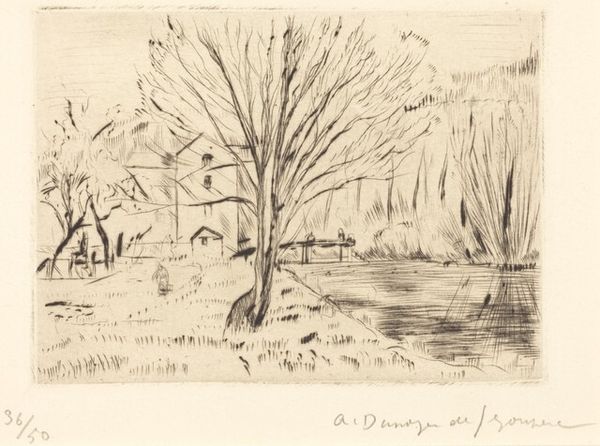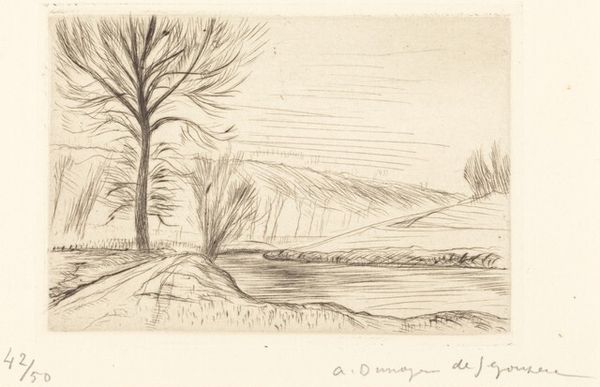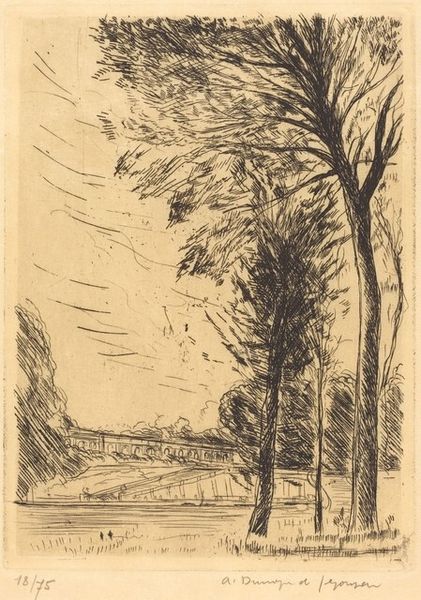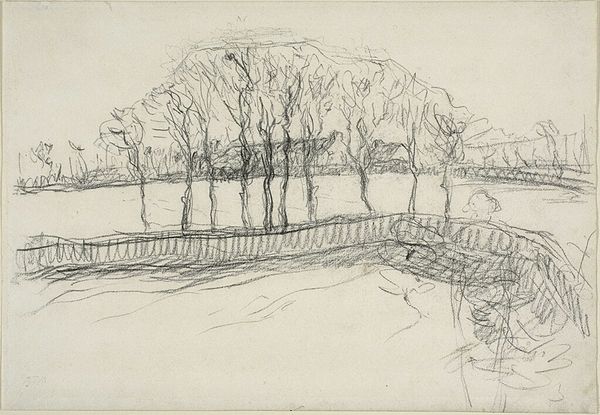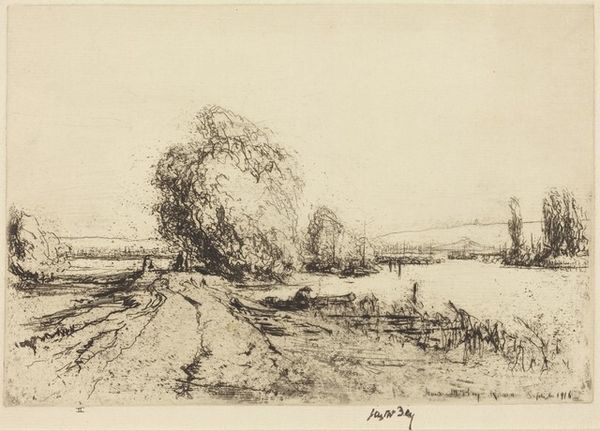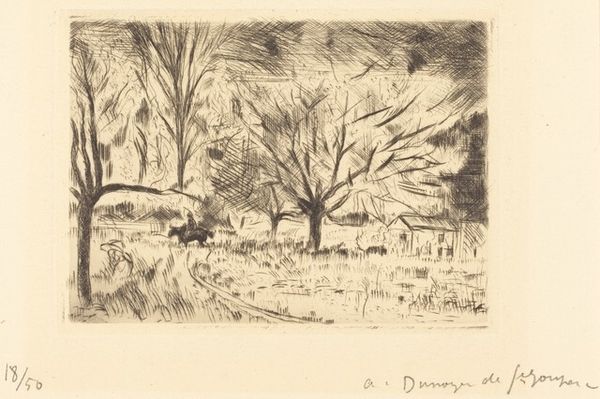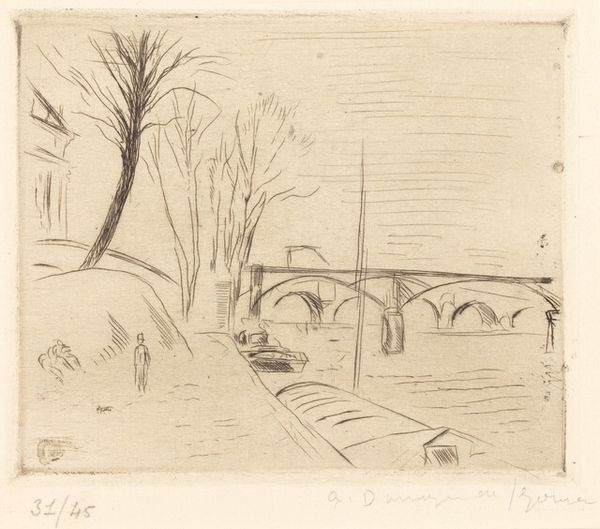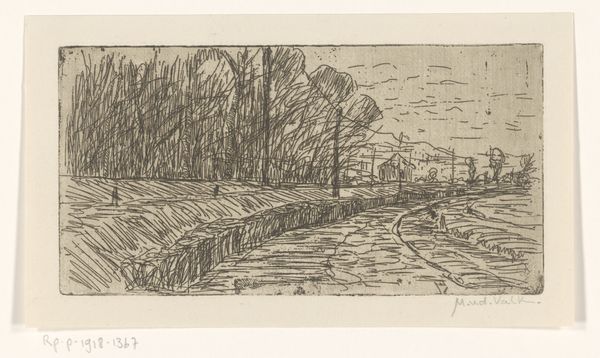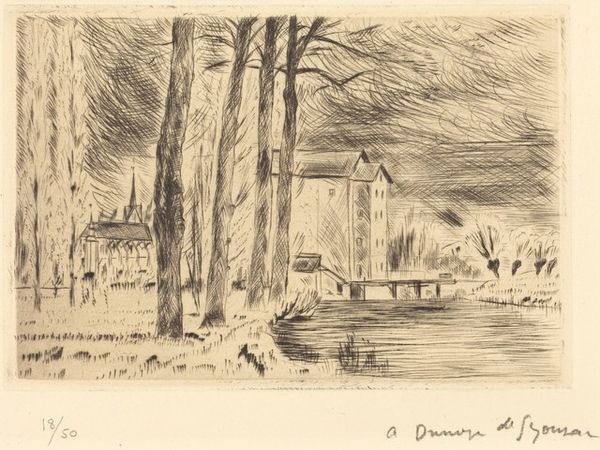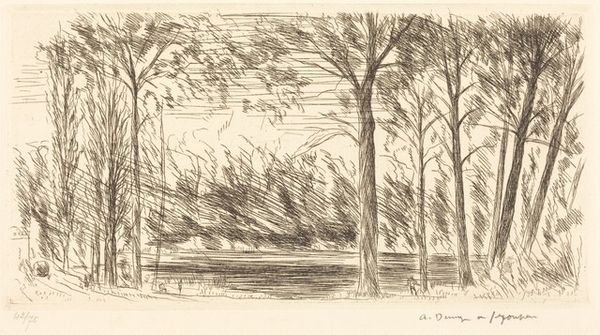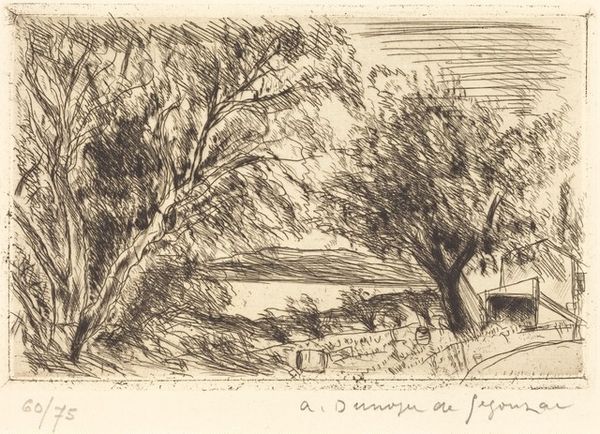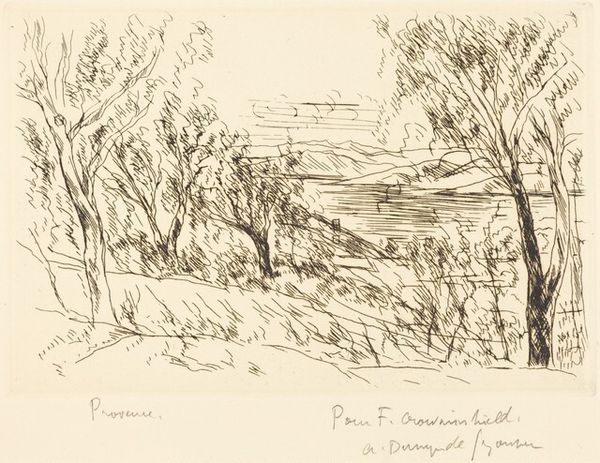
Footbridge at Serbonne (La Passerelle de Serbonne) 1923
0:00
0:00
Copyright: National Gallery of Art: CC0 1.0
Editor: This is André Dunoyer de Segonzac’s "Footbridge at Serbonne," created in 1923. It’s an etching, so a print – it feels incredibly fragile and transient, with all those delicate lines. What do you see in this landscape? Curator: It's a fascinating composition, isn’t it? Consider how the footbridge functions as a threshold. Bridges are potent symbols—they represent transitions, connection between disparate spaces, a movement from one state to another. This one, though, leads the eye but also seems almost swallowed by the bare trees. Does that give you a sense of pause? Editor: It does. The trees reaching across seem almost menacing. I also wonder about the bareness. It's so devoid of life. Curator: Exactly. The starkness of the winter landscape speaks to themes of dormancy and introspection. The etching process itself, with its fine lines and contrasts, reinforces that feeling. Think of it as a visual metaphor: what is hidden beneath the surface, waiting for its moment to emerge? The bridge beckons us to cross, but to what new understanding? Editor: I hadn't considered that, but it makes perfect sense. The house in the distance adds to that mystery—where does the bridge take us, and who lives there? Does the setting convey the same feeling, if it were a sunny day in July? Curator: The absence of figures amplifies the symbolic weight. In this light, this is less about a literal journey and more about an internal one. We are not given clues to who crosses here. This void is ripe with both individual and shared anxieties in a time of global recovery after war. What anxieties and emotional states do you think Segonzac taps into by capturing such seemingly desolate settings? Editor: Thinking about it now, this isn’t just a bridge over a river, but over an emotional landscape. It's really compelling to think of it that way. Curator: Precisely! Etchings have a fascinating place in cultural memory—their lines capture moments, and evoke a psychological response within a world moving from destruction toward progress. It’s a world that wants, and perhaps, needs such subtle, reflective artworks.
Comments
No comments
Be the first to comment and join the conversation on the ultimate creative platform.
